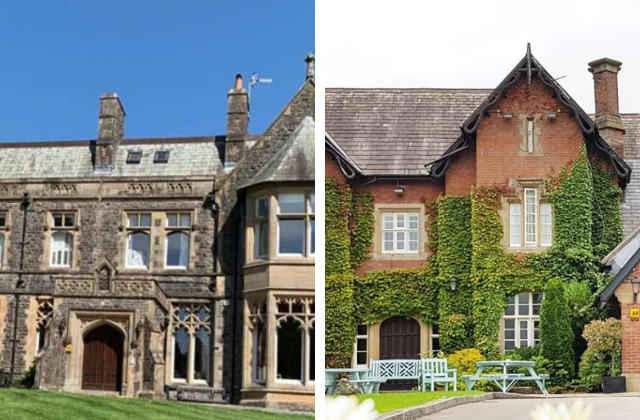In the latest of a series of hammer blows to Lancashire’s high streets, the company that owns Preston’s flagship St George’s Shopping Centre was placed into administration in February.
The challenging retail landscape, made ever more difficult by the negative impact of Covid-19, continues to take its toll, amid growing calls for a different approach to be taken to “building back” Lancashire’s town and city centres.
As well as the St George’s administration, Preston city centre has seen the collapse of Debenham’s, an iconic name that will also leave a big hole in Blackpool and Blackburn’s retail offering.
Topshop, Dorothy Perkins and Burton are also big-name casualties disappearing from a number of high streets across the county.
St George’s which sits on Preston’s main Fishergate shopping street, was first opened in March 1966 and has undergone a number of revamps while remaining a focal point of the city’s retail offering.
Home to household names including Marks and Spencer, Superdrug, New Look and River Island, it was bought by private equity firm InfraRed Capital Partners for £73m in 2015.
According to reports, the centre went into administration after its owner defaulted on a loan.
Joint administrator Alex Williams from EY, said the move would have no operational impact, with the essential shops that are allowed to remain open during lockdown continuing to trade.
Even before the latest spate of business collapses the plight of the high street was causing concern. It was highlighted at the Lancashire Property Conference last year.
Simon Quin, executive director of the High Streets Task Force, set up by the government to lead the revitalisation of town and city centres, was a speaker at the Lancashire Business View event in October.
Looking at the situation he doesn’t see any quick bounce back occurring and predicts: “We will see more empty spaces.
“The Centre for Retail Research says we lost 5,214 multiple retail stores last year and 1,300 in January.
“It is not just retail; hospitality saw many outlets trading at best at over 50 per cent below 2019. They may open but will not break even at that level.”
Dan Metcalf, associate director at Lancashire-based building consultancy AG, also paints a worrying picture. He says Company Voluntary Arrangements (CVAs) are on the rise at “an alarming rate”.
And he adds: “The unfortunate reality is that we will continue to see more struggle across the retail and hospitality sector, which will force the closure of many stores and businesses.”
Simon Quin says the government has acted to try and support the high street: “The money from the Future High Streets Fund is a lot - £830m,” he adds. “This should make a difference in the towns allocated it.
“The first Towns Fund money is also out with more due soon, as well the Recovery Fund and Levelling Up money. There is much depending on what the government does on business rates and what can be sorted by reform of landlord and tenant practices.”
Amid the carnage being faced by retail, new visions are emerging, partnerships are being formed or refreshed and recovery plans are being started are reworked. Town and city centres are looking to reinvent themselves, because they have to.
Simon adds: “We are seeing new proposed uses emerging, with investment in town centre health, wellbeing, community care, gyms, fitness, recreation centres, education, arts, culture, libraries, innovation centres, lifestyle style, local workspace, as well as in the public realm to create spaces for people.”
He is also seeing lots of “pop-ups and temporary attractions”, as well public art.
Danny Pinkus, partner at Preston-based commercial property consultants Robert Pinkus and Company, says: “The high street is having to reinvent itself and the Covid pandemic has been a catalyst for that having to happen now.
“We’re starting to see the evolution to a more leisure-led approach, but it is important to stress retail is not dead.
“People will always want to go out and shop, towns have to be really creative and ambitious as to how they satisfy that demand.”
Gary Crompton is director of retail property consultants Barker Proudlove and was another speaker at last year’s conference. Its client portfolio includes the owners of St George’s. The business also acts for the Houndshill centre in Blackpool and Burnley’s Charter Walk.
He says the uncertainty around high streets isn’t all down to the impact of the pandemic or online selling, pointing to the influence of out-of-town shopping, including the smaller suburban retail centres with anchor supermarket tenants that have sprung up in recent times in areas such as Preston.
And he adds that the situation isn’t the same in every town’s shopping area, with some proving more robust than others.
John Chesworth, who chairs Preston’s Towns Fund board, believes there is an opportunity for positive change but adds: “It requires action and it requires some thinking.”
That includes finding alternative uses for large empty store units such as Debenhams. Looking at the Preston store, John says: “Hopefully we’ll see a really creative potential use for that space.”
He adds: “Landlords have got to start thinking about alternative uses. Hopefully owners of properties have recognised that if they sit wating for a big retail rent to come their way they are going to be waiting a long time.”
Jonathan Wolstencroft, of East Lancashire-based property agent Whiteacres, says: “I think we can all see that the high street is going to suffer over the next few years and in my opinion the government need to consider the cost of business rates.
Landlords also need to look at their rents and planners need to be lenient and allow certain buildings to be converted into residential or live/work space.
“We are advising on three substantial buildings in Burnley town centre, one is a former building society head office, the other is a former Woolworth’s/DW Sports and the other is part of the Arcadia portfolio. In these three instructions alone, there is probably 75,000 sq ft of empty space.”
Gary Crompton says landlords had been taking a more “flexible” approach even before Covid hit with a growing focus on alternative uses. He says: “Their minds had been opened even pre-Covid.”
He points to the plans St George’s owners had to create a restaurant quarter, mothballed as a result of the pandemic, and which had signed up two major food and drink tenants.
It’s a plan he believes that was the “right decision” for the centre and may yet still happen.
However, looking at the general picture around repurposing retail, he says: “It has been difficult to make alternative uses stack up. In most cases retail has still been the best value.”
- To read this feature in full and access further Lancashire business news, advice and analysis subscribe to Lancashire Business View magazine or join the LBV Hub from just £2.50 per month. Click here to subscribe now.
Enjoyed this? Read more from Ged Henderson






















